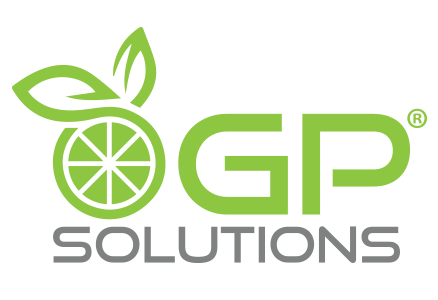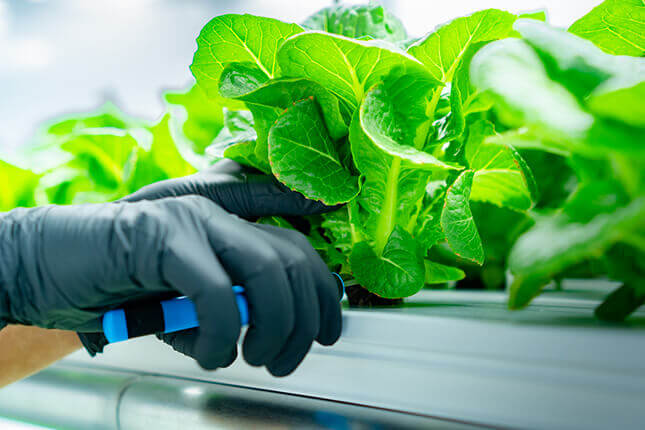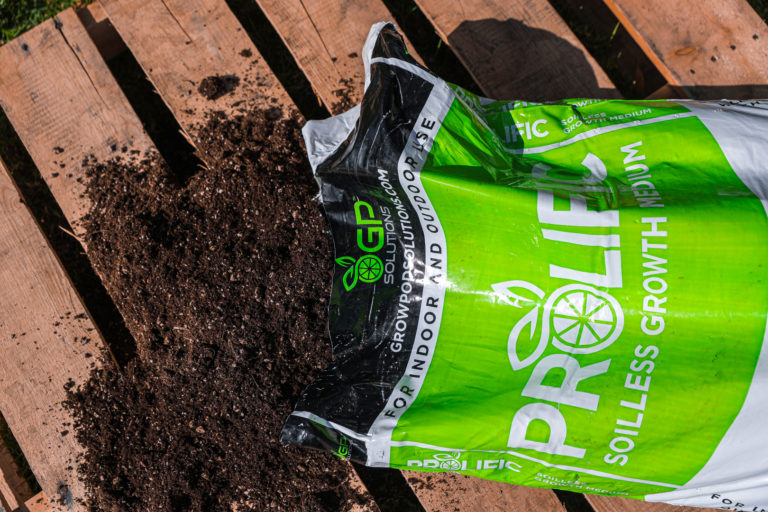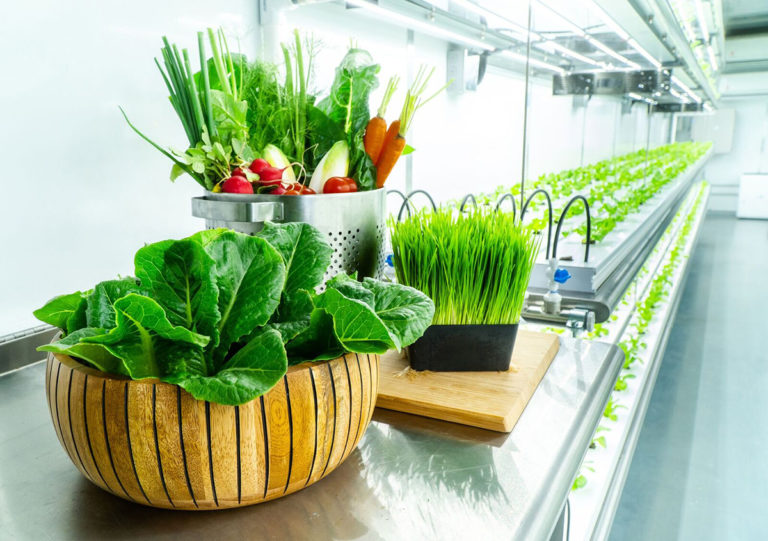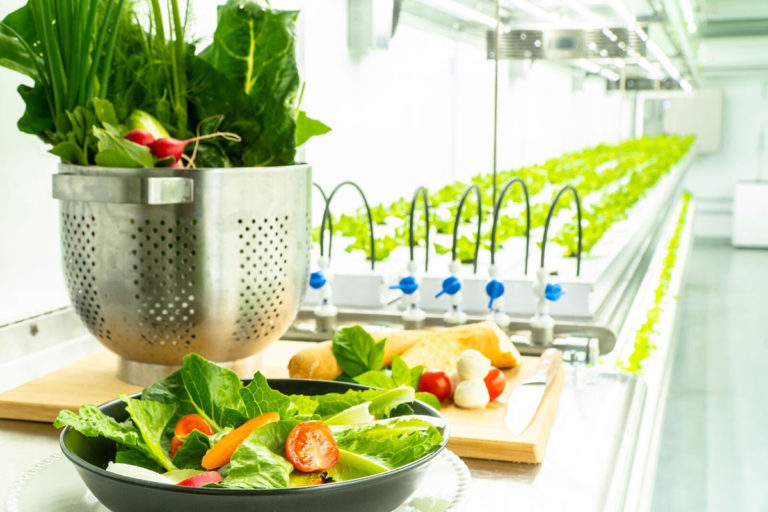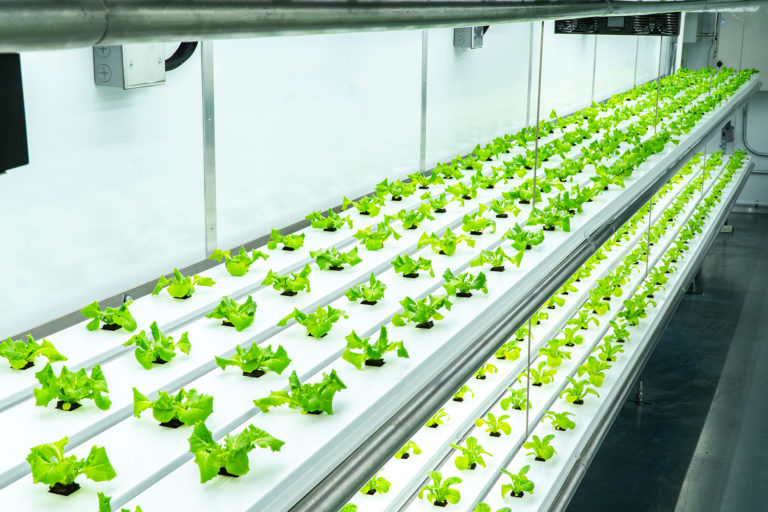Across the world in sealed shipping container and labs, revolutions are being plotted. This sounds like a James Bond movie but it’s happening for real and (this time) the revolutionaries are on our side!
What’s the aim? Only the oldest, most-established industry in the world: farming. The basic elements have been the same for thousands of years and are so familiar most people won’t even think about the assumptions – farming is an activity where crops are grown outside in dirt and plants grow with sunlight and rain and are harvested once a year, right?
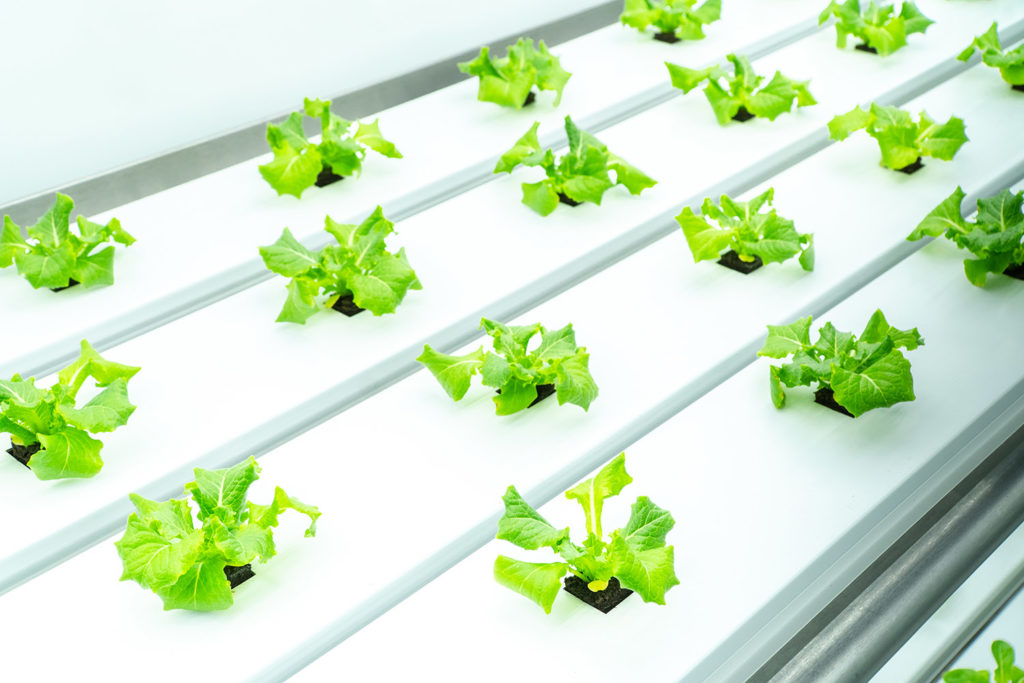
The future of farming is indoors
In the future, plants will be grown indoors under artificial light and been harvested many times a year in surgically clean dirt-free rooms. It’s called vertical farming and scores of companies have sprung up around the world over the last decade, usually operating out of old warehouses, factories or even recycled shipping containers. Inside you’ll see stacks of young plants, often immersed in gentle blue and purple lights.
The lighting by small cool LED’s can be attuned for each crop at the right time of the growth cycle. In fact, the entire environment can be tightly controlled according to the needs of the plant and the business. Vertical farming yields more crops per square meter than traditional farming or greenhouses do.
Vertical farming also uses less water, grows plants faster, and can be used year-round – not just in certain seasons. The facilities also can, in theory, be built anywhere with flat land and access to electricity and water. Even then there are those working on systems which are powered off-grid and which recycle their own waste.
What and how to grow
You can pretty much grow anything though most farmers will tend to focus on fast-growing high margin crops like herbs and leafy greens where the freshness and flavor impact is more immediate and able to command premium prices. Root vegetables on the other hand, with their long growing cycles, are likely to be grown outdoors for a few years yet.
Most systems will use hydroponics, in which plants are grown in a nutrient-rich bath of water, or aeroponics, where crops’ roots are periodically sprayed with a mist containing water and nutrients. The latter uses less water overall, but comes with some technical challenges. That hasn’t stopped aeroponics trend setter Aero farms which has opened what they say is the world’s largest indoor vertical farm – with an incredible 70,000 sq ft floor space.
One major benefit to indoor farming is that if the system is well-maintained, then the technology should, in theory, allow for reproducible results with every harvest. In other words the quality and taste will be the same every time, regardless of the weather. Secondly, while it costs a lot of money to set up a large vertical farm there are a number of attractive options for people getting into the agriculture business for the first time. With turnkey systems like Grow Pod Solutions, new farmers don’t need to spend years, or even generations, learning how to work with the vagaries of mother nature and can be up and growing within hours.
Where next?
As vertical farming technologies develop and costs fall some are betting that people will want to start growing their own greens at home. There’s been a spike in home beer brewing and growing marijuana at shipping containers at home has always been possible – might we see the farm coming straight into the house?
Neofarms is one start-up based in Germany and Italy that is working on this. Its founders have developed a prototype aeroponic vertical farm about the size of a household refrigerator.
Users will have to pay for the electricity and water of this home aeroponic system but in return, they will have the freshest produce possible. The system is fully automated to ensure ease of use and the company claims it produces enough greens to feed a family of four members with a footprint of less than 3 sq feet and up to 21sq feet of growing surface.
Time will tell if this system will work out. Could we get to a stage where every grocery store has its own farm? The vertical farming technology is entirely possible. The food would be fresh and clean and there would be zero transport losses. It would even be healthier as there would be no need for preservatives or to use breeds designed for long distance transport.
This is indeed a revolution – the farm comes back into the city, even into your kitchen!
